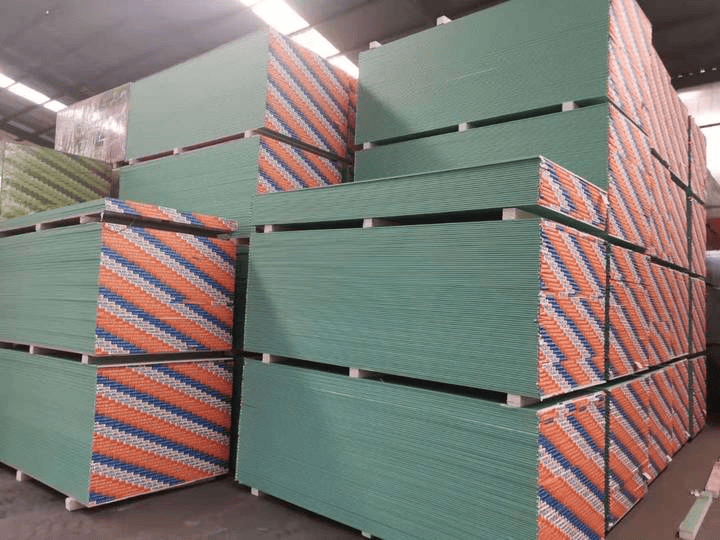Gypsum board is naturally vulnerable to water, but specialized versions are designed to resist moisture in damp environments.
There is no truly “waterproof” gypsum board—only water-resistant types treated to slow moisture absorption.

In my experience, the term “waterproof gypsum” is misleading. Water-resistant boards are made with treated gypsum cores using hydrophobic additives like silicone, and coated or specially faced papers that resist moisture. They slow water penetration but cannot withstand full immersion over time. In bathrooms, kitchens, or laundry rooms, these products work best as part of a complete waterproofing system.
| Board Type | Resistance Level | Main Application |
|---|---|---|
| Green Board | Light moisture | Half-bath walls |
| Blue Board | Medium moisture | Kitchens, laundry rooms |
| Purple Board | High moisture | Full bathroom walls |
What is water resistant gypsum board?
Water-resistant gypsum board is a specially treated panel to reduce moisture damage in humid spaces.
It has a modified gypsum core and moisture-resistant facing to protect against warping, mold growth, and paper delamination.

I have seen these boards hold up for years in high-humidity conditions when combined with proper sealants and ventilation. Hydrophobic agents in the gypsum repel water molecules, while treated facings minimize surface swelling. Manufacturers often color-code them—green for standard resistance, blue or purple for higher performance—making it easier to choose by application.
| Treatment Method | Benefit |
|---|---|
| Hydrophobic Additives | Slow moisture absorption in gypsum core |
| Treated Paper Facings | Resist mold and surface damage |
| Fiber Reinforcement | Improve strength and humidity resistance |
Can you waterproof gypsum?
Gypsum itself cannot be made fully waterproof, but you can significantly improve its moisture resistance through coatings and system design.
Applying a waterproof membrane or sealant over gypsum board helps protect it in wet-area installations.

Over many renovation projects, I learned that relying on gypsum’s built-in resistance is not enough for wet zones. The best results come from combining water-resistant gypsum board with liquid-applied membranes, sheet membranes, or tile systems. Corners, seams, and pipe penetrations must be sealed thoroughly. This layered approach transforms gypsum board into a reliable substrate for humid areas without compromising speed of installation.
| Step | Description |
|---|---|
| Use WR Gypsum Board | Start with moisture-resistant core |
| Apply Membrane/Sealant | Coat with waterproof layer |
| Treat Joints | Seal gaps and penetrations carefully |
| Final Covering | Use tile or other waterproof finishes |
Can gypsum board be used in a bathroom?
Yes, gypsum board can be used in bathrooms if you select the right type and install it correctly.
Water-resistant gypsum board works reliably in bathrooms provided it is paired with proper waterproofing treatments.

Bathroom installations in my projects always include sealing critical points like wall corners and plumbing cutouts. High-grade purple board or blue board withstands humidity well, but in shower enclosures or directly wet areas, cement board remains the safer choice. For other bathroom walls, WR gypsum offers a balance of cost, speed, and durability when supported by coatings or tile finishes.
| Area | Recommended Board Type | Extra Notes |
|---|---|---|
| Bathroom walls | Purple/Blue WR gypsum | Use with waterproofing membrane |
| Shower stalls | Cement board | Direct water exposure resistant |
| Ceilings | WR gypsum or standard | Add moisture-resistant paint |
Conclusion
Gypsum board is not fully waterproof, but water-resistant variants with proper sealing can perform well in bathrooms and humid spaces. Correct installation is key to longevity.
